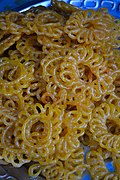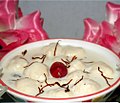This article needs additional citations for verification .(June 2017) |
This is a list of Bengali sweets and desserts. Most of these sweet dishes are unique to Bangladesh but some of them originally came from other parts of the Subcontinent and re-made as a new Bangladeshi versions of them. To know more check out: Bangladeshi cuisine, Bengali cuisine, Mughlai cuisine and South Asian cuisine.



























